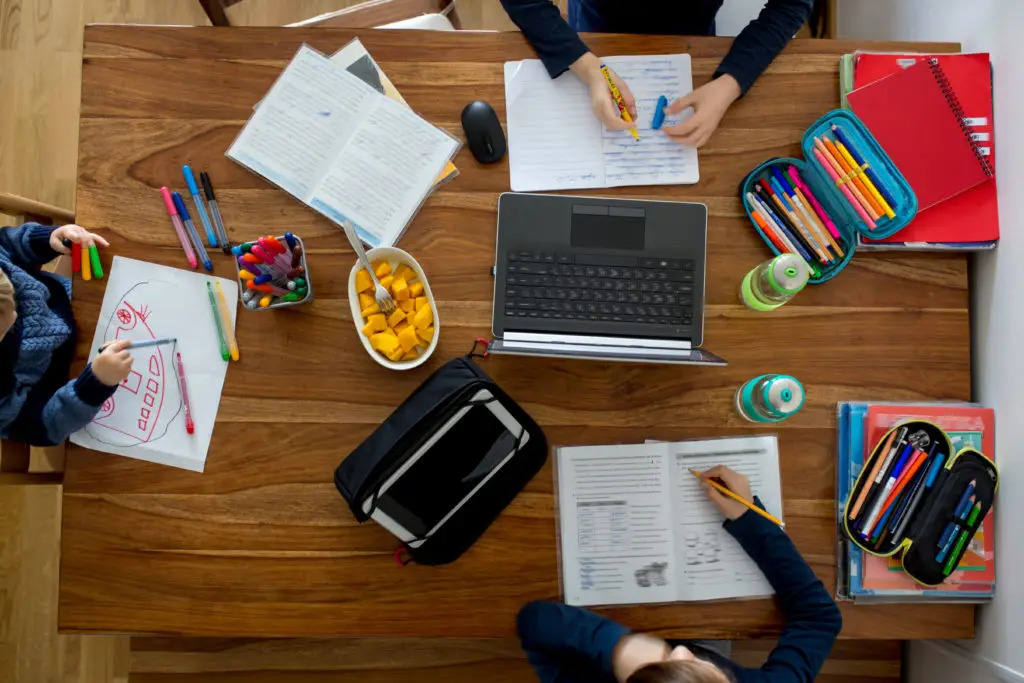Pandemic pods were borne by necessity as families faced urgent needs for childcare and remote learning support. But they also offer fresh solutions to an age-old education problem: how to dramatically lower class sizes without diluting teacher quality and falling into traps that have snared traditional class size reduction efforts.
By leveraging pandemic innovations in student support, school systems recovering from the COVID-19 crisis may be able to recreate the high level of individual attention students saw in successful pandemic pods.
Pandemic pods bring together small groups of same- or mixed-age students who are supported by an educator or sometimes a parent or group of parents who share responsibilities. They differ from schools in many ways but perhaps none more markedly than their size: the pods in our sample ranged from two to fourteen students, with five students being the most common.
They are radically small—smaller than even the most intensive class size interventions. The much-discussed Tennessee STAR experiment capped class sizes at 13 to 17 students–nearly triple the size of a typical pandemic pod.
Families and educators alike recognized the tremendous benefits that come with small learning communities. Students no longer felt lost in a sea of classmates. Teachers could more easily treat each student as an individual, meeting their needs and interests.
As one pod educator told us: “This is probably the most professionally satisfied I’ve been in my entire career. . . . Being able to be one-on-one and form relationships with kids. I can tell you every single one of their strengths, I can tell you their weaknesses. . . . I’ve never been able to do that before in my life, except with my own child, and that’s super powerful.”
One parent we interviewed said her 3rd-grade son, who had been receiving services for learning disabilities before the pandemic, thrived in a learning pod with four other students. It went so well that she was looking for ways to keep her learning pod going into the 2021–22 school year or, failing that, to find a private school with small classes.
“The growth, the development, it’s just exponential in what we’ve seen—even things that we weren’t necessarily noticing before,” she said. “His behavior is better. He’s a much happier kid. I can honestly say we’d love to keep it going indefinitely, just because of the benefits that we’ve seen from the small environment and the more individualized learning.”
While many parents instinctively understand the value of smaller class sizes, initiatives that aim to lower class sizes have failed to produce the expected academic benefits. One reason for this is that class size reduction initiatives typically force schools to hire more teachers than they would otherwise. As a result, schools end up employing less-qualified and less-experienced teachers.
The body of research is clear that improving teacher quality is a better bet for improving student outcomes than reducing class size. In other words, a large class with an excellent teacher produces better learning gains than a small class with an ineffective teacher.
This trap has been unavoidable so long as classrooms are organized such that one educator is responsible for delivering most of the instruction, supporting students socially and emotionally, and designing interventions for students who need more help. But pandemic-era solutions might show another way.
Nearly every public school system in America now has intimate experience with the pitfalls and potential of online learning. Learning pods brought new adults—including families and community-based organizations who hosted pods—into the process of supporting student learning. And new online support providers have the potential to spread the impact of great teachers into classrooms led by less-experienced educators.
Here are a few ways school systems could harness these developments to achieve the promise of class size reduction—including more intimate and individualized learning experiences for students—without the pitfalls:
- Scale the best teachers virtually, add in-person support: Online lessons allow schools and districts to spread the impact of their best teachers across hundreds or thousands of students, rather than a few dozen. This allows schools to fundamentally rethink instructional staffing. Highly effective teachers can broadcast lessons virtually while teachers-in-training or other supportive adults provide in-person support to small groups. Cadence Learning, for example, creates video lessons delivered by seasoned teachers with strong track records. Educators working in-person with students can choose to broadcast the lessons, in full or in part, or simply apply the moves of the master teachers. Cadence thus “unbundles” pedagogical and instructional expertise from the skills required to nurture relationships, students’ identities, and social-emotional well-being.
- Part-time schooling: Schools could offer hybrid models in which students attend school part-time to get instruction in core academic subjects. They could then meet in smaller groups, either at home or at community-based organizations, for tutoring, hands-on projects, and enrichment. This would enable families to tap effective teaching in their “home school” but free them to tap more personalized learning experiences outside of school.
- Charter teaching: States could turn the economics of public education on its head by allowing teachers to operate in private practice. Certified teachers could apply to states or school districts for the right to do what some learning pod leaders did during the pandemic: Market their services to groups of families online, and operate classes in living rooms, public buildings, or rented spaces. These teachers could receive a flat funding rate for students who enroll—say, 90 percent of the state’s average per-pupil cost. The state and the school district could retain a portion of the funding for oversight and other overhead. Local school districts could still offer some support, like special education services, and receive funding accordingly. Existing district curricula or free online resources like Khan Academy (which often provided crucial support to teachers leading learning pods) make it easier than ever for teachers to go it alone and still plan lessons aligned to widely used curriculum standards.
The families we’ve interviewed highlighted an important and potentially transformative shift: pandemic pods changed their expectations about the level of individualized support that’s possible. The question now is whether school systems can find ways to meet their raised expectations.





